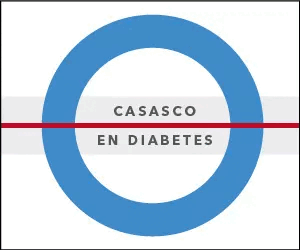P35 INGAP-PP stimulates changes at the transcriptional level in both endocrine and non-endocrine cells of the Islet
DOI:
https://doi.org/10.47196/diab.v54i3Sup.421Keywords:
INGAP-PP, endocrinecells, non-endocrinecellsAbstract
Introduction: INGAP-PP, a pentadecapeptide derived from INGAP (Islet Neogenesis Associated Protein), enhances insulin secretion against glucose stimulation, increases the mass of islet β cells and protects them from the cytotoxic action of streptozotocin. These evidences allow us to propose it as a possible therapeutic resource for prediabetes and type 2 diabetes.
Objective: To study the mechanisms, at the transcriptomic level, that condition the effects of INGAP-PP, highlighting the contribution of different cell types in its therapeutic role.
Materials and Methods: Normal male Wistar rat islets were isolated and cultured for 4 days in the absence or presence of INGAP-PP and 11 mM glucose. After verifying the enhancing effect of INGAP-PP on insulin secretion induced by 16.7 mM glucose, RNA was extracted from the islets of both groups and massive sequencing (RNA-seq) was performed.
Results: 1303 genes were found that change their expression significantly (p <0.05), 55 of which were not registered in the rat genome. Using public data from scRNA-seq (single cell RNAseq), it was found that INGAP-PP stimulates, directly or indirectly, changes at the transcriptional level in various cell types, endocrine and non-endocrine,
present in the Islet. A GSEA (Gene Set Enrichment Analysis) analysis made it possible to link the expression of these genes with different biological processes. Our results suggest that INGAP-PP, in addition to acting on intracellular processes already described, would affect new signaling pathways, such as those mediated by Rho, Ras and the death receptor. Furthermore, they indicate that it stimulates the remodeling of the extracellular matrix, showing the overexpression of different types of collagens, elastin and metallopreoteases. Based on data from sc-RNA Seq, the expression of these genes could be linked to a population of cells resident in the islets, the Pancreatic Stellate Cells, linked to functions of structural maintenance and secretion of components of the extracellular matrix.
Conclusion: Our results propose new mechanisms of action exerted by INGAP-PP that involve different non-endocrine cell types of the islet.
Downloads
Published
How to Cite
Issue
Section
License

This work is licensed under a Creative Commons Attribution-NonCommercial-NoDerivatives 4.0 International License.
Dirección Nacional de Derecho de Autor, Exp. N° 5.333.129. Instituto Nacional de la Propiedad Industrial, Marca «Revista de la Sociedad Argentina de Diabetes - Asociación Civil» N° de concesión 2.605.405 y N° de disposición 1.404/13.
La Revista de la SAD está licenciada bajo Licencia Creative Commons Atribución – No Comercial – Sin Obra Derivada 4.0 Internacional.
Por otra parte, la Revista SAD permite que los autores mantengan los derechos de autor sin restricciones.







































